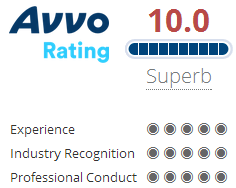The Horizontal Gaze Nystagmus, also referred to as HGN, is one of three standardized field sobriety tests, or SFSTs. These tests are administered during a traffic stop and after a driver is suspected of driving under the influence of drugs and/ or alcohol (DUI). SFSTs are used by police to obtain the probable cause needed for a driver to be arrested for DUI.
The tests are also used in criminal court to show that a driver’s abilities were impaired by alcohol and/ or drugs. Even without a blood alcohol concentration, or BAC, of 0.08 percent, the prosecution can secure victory with by using the SFSTs results. Unfortunately for drivers convicted of DUI, when SFSTs are used as evidence, there is one problem. The SFSTs are not 100 percent accurate. The inaccuracy can occur as a result of problems such as being graded or administered improperly.
The HGN Test
When all of the tests are compared side-by-side, the HGN is generally the most accurate. It tests the involuntary jerking or twitching the eye when a person looks in a particular direction. The movement varies from fast to slow. The Nystagmus is also connected to alcohol consumption because when it naturally happens, the eyes are rotated at extreme angles. However, when a person is under the influence of alcohol, the Nytagmus may have exaggeration, and this may occur at lesser angles. Therefore, failing the test is often connected to having a BAC 0.08 percent or higher.
How is the HGN Test Administered?
During a traffic stop, an officer moves a small object such as a penlight about 12 to 15 inches from the driver’s eyes. The angle is a little higher than the driver’s eye level. The driver must use only his or her eyes to follow the movement of the object as the officer moves it from side to side and up and down.
The officer studies the driver’s eye movement looking for some of the following signs of being under the influence of alcohol:
- The driver cannot smoothly follow the object with his or her eyes.
- The eye jerking movement begins at 45 degree of the center of the eye.
- There is a distinctive jerking movement in the eye at a maximum deviation.
If the driver shows two or more signs, he or she is considered to have a BAC of 0.08 percent or higher. Keep in mind that the National Highway Traffic Safety Administration, or NHTSA, found that the HGN test was 88 percent accurate when administered and conducted correctly.
HGN Test Errors and False Positives and Other Types of Defenses
When a driver is charged with DUI, it’s vital to look for all possible defenses that could have influenced HGN results. First, the test must be done properly to yield accurate results. For instance, when an officer holds the penlight too far away from the driver’s eyes, the following can happen:
- The driver inaccurately records the angle at which the driver’s eye began jerking.
- The officer starts on the wrong side.
- He or she does not hold the object to the side for the required time period of four seconds.
- These factors skew the HGN results.
The test must also be administered in the right conditions or it will yield a false positive result. The driver cannot face bright lights or other moving objects when taking the test. Medications can also skew the results. Medical conditions like an inner ear problem or brain tumor can cause a false positive.
If you have been arrested for DUI, contact the Law Offices of Jonathan Franklin to schedule your free consultation. Jonathan Franklin is a former prosecutor who skillfully and aggressively defends those accused of driving under the influence in Los Angeles.














